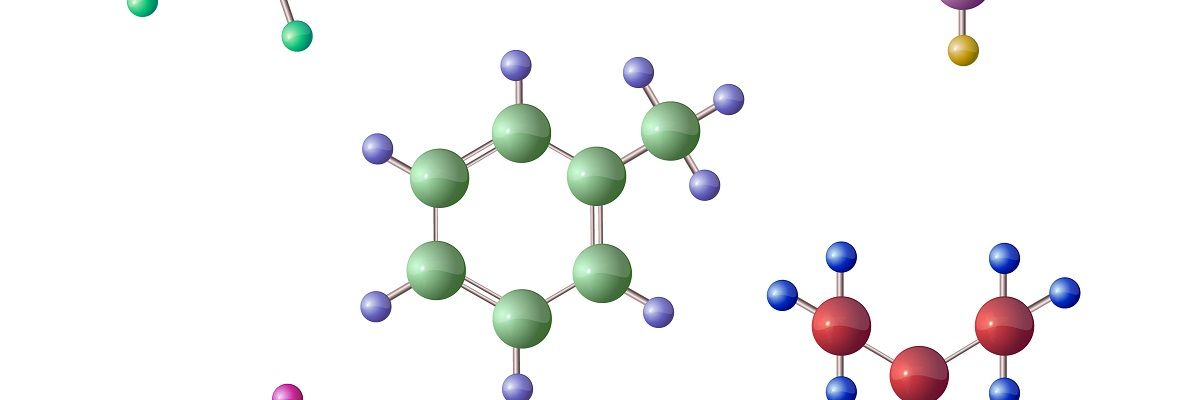
Czech scientists confirm the existence of the π-hole in molecules, proving a decades-old theory
30. 08. 2023
Researchers from the IOCB of the CAS, the Institute of Physics of the CAS and Palacký University Olomouc have made a groundbreaking discovery – using an advanced method of scanning electron microscopy, they’ve managed to image not only the inside of a molecule, but also the structure of the electron shell of the atom. Their experiment was the first in the world to confirm the non-uniform distribution of electron density in aromatic molecules and the existence of the so-called π-hole. The significance of the results of this research at the submolecular level is comparable to that of the discovery of cosmic black holes. The study was published in Nature Communications.
The scientists focused their experiments on aromatic hydrocarbons. Anthracene, benzene, naphthalene, and other aromatic molecules have so-called pi electrons located above and below the carbon skeleton. “However, if we replace the peripheral hydrogens with more electronegative atoms or groups of atoms that pull electrons away, the originally negatively charged clouds turn into positively charged electron holes – π-holes [pi-holes],” explains Pavel Hobza from the Institute of Organic Chemistry and Biochemistry of the CAS (IOCB Prague), who contributed significantly to the research in question.
The researcher likens the aromatic molecule to a volcano. When the volcano erupts, a huge crater appears underneath, and we can imagine this as the π-hole. Pavel Hobza explains more in the following video (English subtitles available):
The significance of the results of this research at the submolecular level is comparable to that of the discovery of cosmic black holes. In fact, black holes were theorized for decades as well before experiments proved and confirmed their existence. The same research team involved in the discovery of the π-hole had already achieved great success with their previous study, which was published in Science in 2021, in which they proved the existence of so-called sigma-holes (σ-holes).
“The confirmation of the existence of the π-hole, as well as the σ-hole before it, fully demonstrates the quality of the theoretical predictions of quantum chemistry, which have accounted for both phenomena for decades. It shows that they can be relied upon even in the absence of available experiments,” Hobza explains.
Have you ever seen a π-hole on a single molecule?
— IOCB Prague (@IOCBPrague) August 29, 2023
Scientists led by Pavel Hobza from @IOCBPrague, Pavel Jelínek / @nanosurflab and @Brunodltorre from @FZU_AVCR & @CatrinUP have once again successfully uncovered the mysteries of the world of molecules and atoms by experimentally… pic.twitter.com/3MVuXwwhHv
Unique microscopes
The above-mentioned discoveries have been made thanks to the unique scanning electron microscopy available at the Czech Advanced Technology and Research Institute (CATRIN). “Thanks to our previous experience with the Kelvin Probe Force Microscopy (KPFM) technique, we have been able to refine our measurements and acquire very complete data sets that have helped us to deepen our understanding not only of how the charge is distributed in the molecules but also of what observables are obtained with the technique,” says Bruno de la Torre, head of the research group at CATRIN.
A better knowledge of the distribution of the electron charge will help scientists understand a number of chemical and biological processes. In practice, this will translate into the ability to build new supramolecules and subsequently develop advanced nanomaterials with improved properties.
Prepared by: Leona Matušková, External Relations Division, CAO of the CAS, drawing on the IOCB Prague press release
Translated by: Tereza Novická, External Relations Division, CAO of the CAS
Photo: Shutterstock (aromatic hydrocarbons)
Read also
- Renewables are a strategic investment in European security, scientists say
- New record set for neutrino mass: one million times less than an electron
- On the trail of the endangered little owl: searching for newly hatched owlets
- Teen scientist breaks barriers: No child is a lost cause
- The Czech Academy of Sciences has appointed its new leadership for 2025–2029
- Literature is tied to its historical context. How can we read between the lines?
- Radomír Pánek: The Academy must be united, strong, and proactive
- A springtime booster: The healing potential of tree buds
- A novel compound that protects bone cells may benefit diabetic patients
- New interactive exhibition at the CAS showcases materials shaped by genius ideas
The Czech Academy of Sciences (the CAS)
The mission of the CAS
The primary mission of the CAS is to conduct research in a broad spectrum of natural, technical and social sciences as well as humanities. This research aims to advance progress of scientific knowledge at the international level, considering, however, the specific needs of the Czech society and the national culture.
President of the CAS
Prof. Eva Zažímalová has started her second term of office in May 2021. She is a respected scientist, and a Professor of Plant Anatomy and Physiology.
She is also a part of GCSA of the EU.